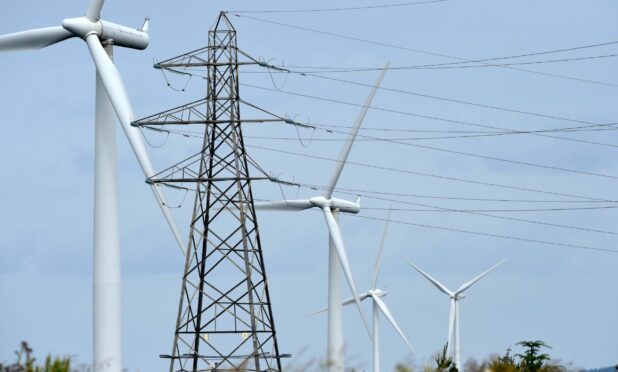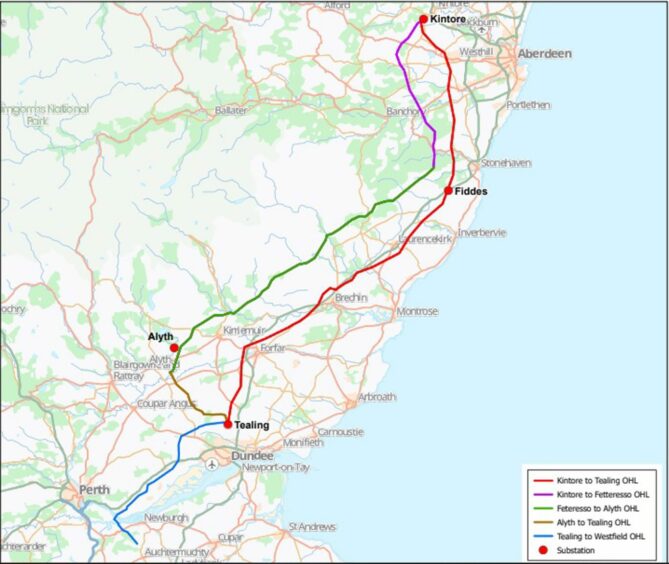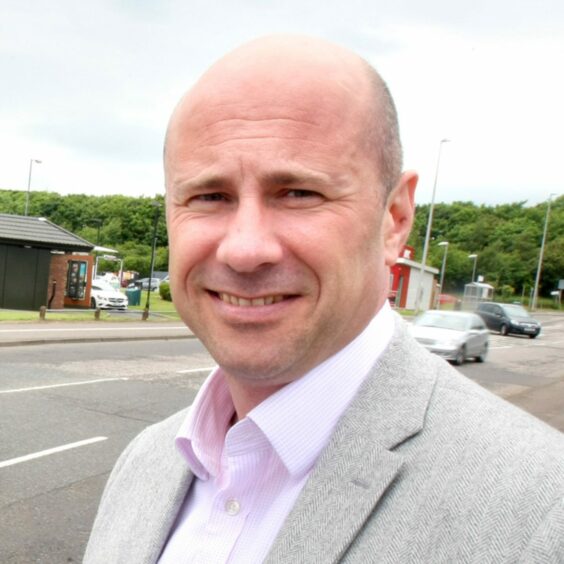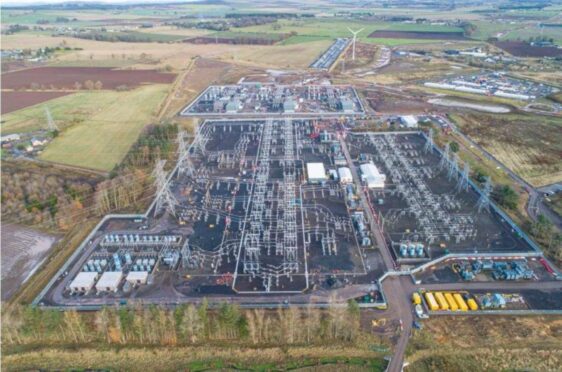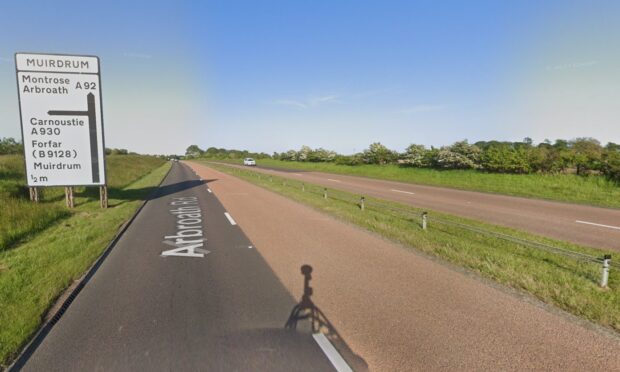Angus councillors may push for a public inquiry over a plan to run a line of super pylons through the county if energy giant SSEN does not deliver a ‘gold standard’ engagement with local communities.
The Kintore-Fiddes-Tealing scheme could see the pylon route stretch more than 60 miles through the Angus and Mearns countryside.
There is growing anger along the planned path of the 400kV overhead line over poor public consultation so far.
Forfar mistake
This month, SSEN bosses admitted Forfar councillors and community councillors were missed off a briefing list for the scheme.
The firm has already extended a consultation programme until June 23.
But campaigners say many people are still unaware of the potential scale of the project.
Average pylon height will be around 55 metres – equivalent to ten double decker buses on top of each other.
Emergency motion
Angus Council opposition leader Derek Wann will put an emergency motion to this week’s full Angus Council meeting.
It demands SSEN steps up consultation with communities and is looking for guarantees from the power firm.
Mr Wann says the alternative is to call for a public inquiry on the scheme under the terms of the 1989 Electricity Act.
It gives local authorities the power to force an inquiry if they object to a planning application.
That would likely delay the 400kV OHV plan by some considerable time.
SSEN hope to have the new infrastructure in place by 2030 to meet UK and Scottish Government targets.
‘Not an objection’
Arbroath East and Lunan Conservative Mr Wann’s motion reads: “To ask the Secretary of State under Electricity Act legislation for a public inquiry if SSEN are unable to guarantee all affected Angus communities have had the gold-standard engagement commensurate with a development of this size and impact.”
He said: “It’s important for people in Angus to know this is not an objection.
“If we’re going to transmit all this power from wind, carbon capture and hydrogen down the line, better infrastructure will have to be built.
“That will protect our energy security, keep bills down and help the environment.
“We have to do it.
“However, there may be options that haven’t been discussed with SSEN.”
He added: “And after dealing with constituents, we think this is the only way we’re going to get a way forward that’s acceptable to communities.
“At the end of the day, all the councillors are only here to do that.
“Angus has been an information desert with regards to this.
“It transpires local councillors have been missed out of meetings, Forfar got missed out and I understand the local MP hasn’t met SSEN yet either.
“And that’s just the things we know about.
“You only have to dip into social media to see how people have reacted to all that.
“While talk of objections and protests might not be helpful to what is a very important objective – carbon net zero – we need to give Angus residents the confidence that SSEN has given them that gold standard engagement they deserve.”
The motion will go before the council meeting on Thursday.
Project in early stages
SSEN stress the project is in the early stages of development.
No specific overhead line route alignments or substation locations have been identified.
“We are currently seeking feedback on potential corridor and route options and preferred substation locations, and would like to thank everyone who has shared their feedback so far which will be carefully considered as we further refine our plans.
“We would also like to reassure stakeholders we will continue to engage on our proposals after the formal consultation period closes as we further refine our plans to deliver this critical national infrastructure that is key to delivering a pathway to Net Zero and secure the country’s future energy independence.”
The Kintore – Fiddes – Tealing project is part of the £10 billion Pathway to 2030 programme of transmission network investment across the north of Scotland.
It will play a key role in enabling the connection of up to 11GW of new offshore wind capacity through ScotWind projects.
That is enough to power more than ten million homes in the UK, supporting 20,000 jobs – 9,000 in Scotland.
